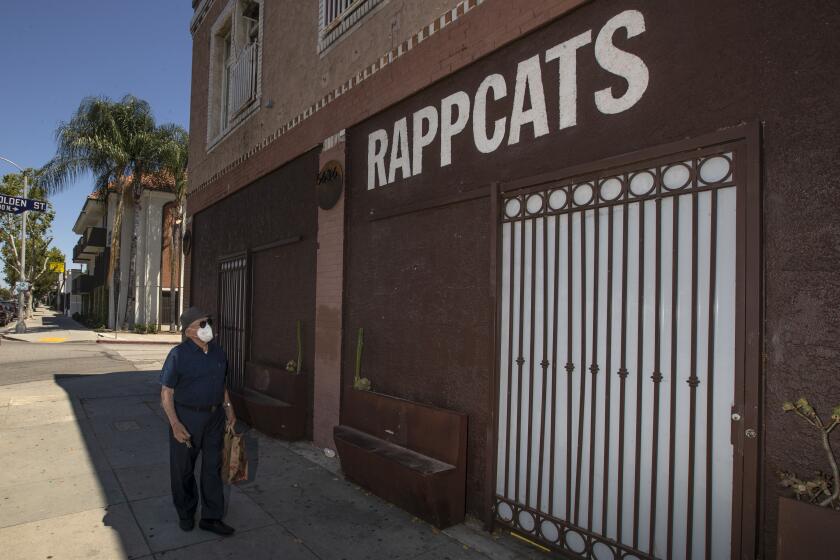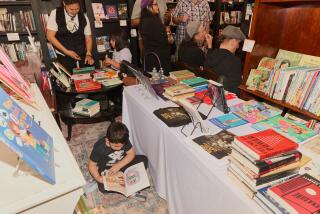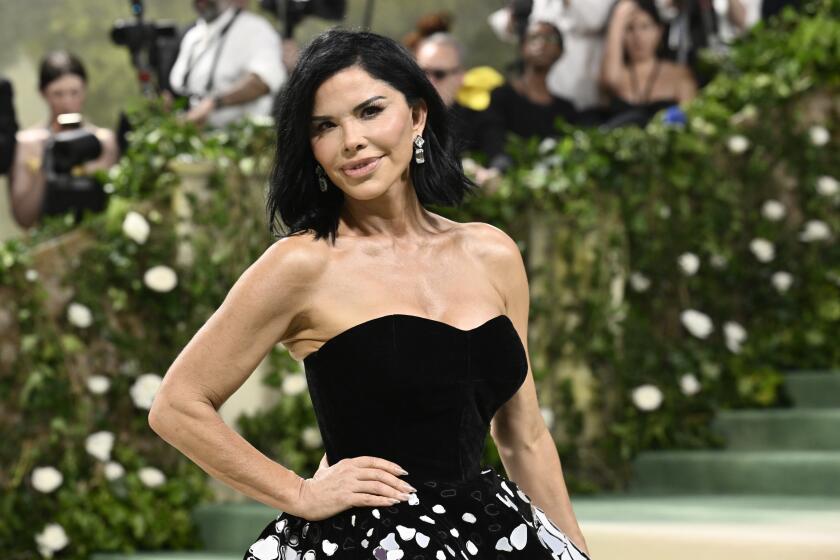Place History: Avenue 50 and other Eastside havens from gentrification
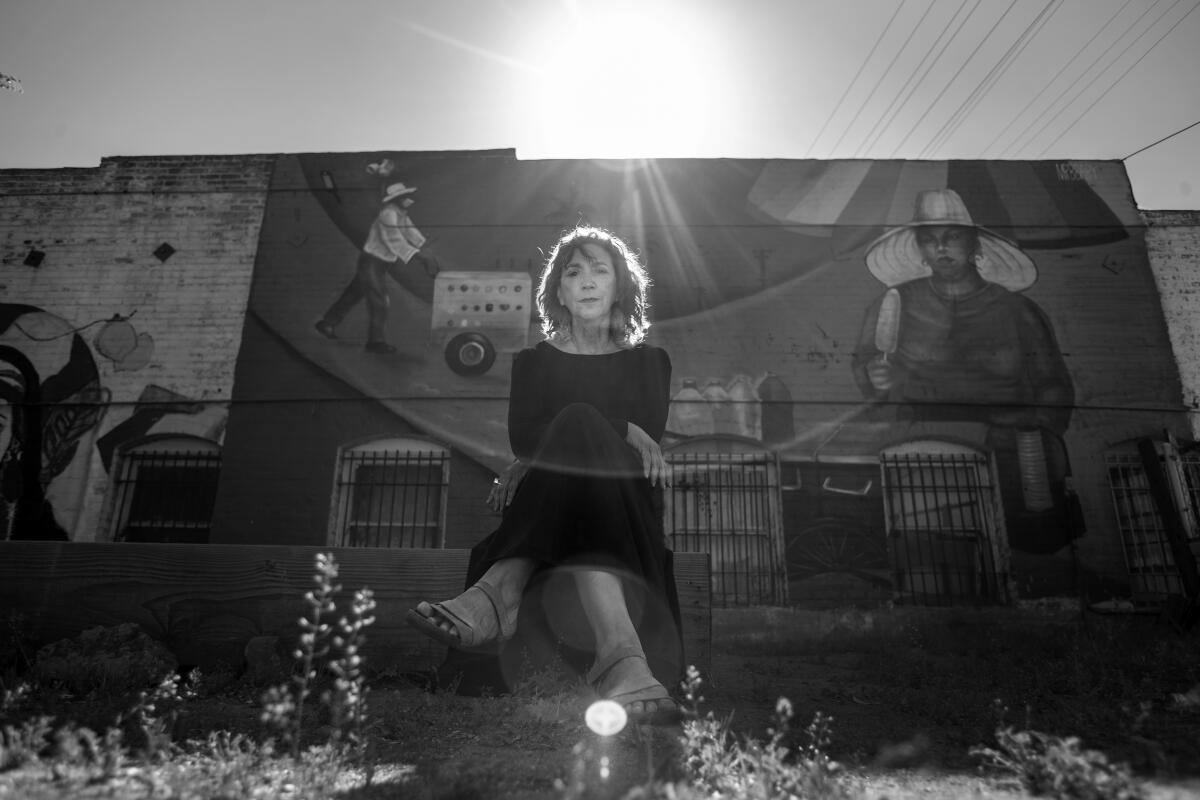
This story is part of Lit City, our comprehensive guide to the literary geography of Los Angeles.
The doors built into the cobalt blue facade of Avenue 50 Studio, adorned with a vibrant Sagrado Corazón, seem always to be open. Kathy Gallegos, director and visual artist, developed this space into a Latinx community arts nonprofit in the heart of Highland Park, launching and promoting the careers of writers and visual artists alike. Since she first opened those doors in 2000, Gallegos has grown a small live/work space into galleries, artist studios and headquarters for the multilingual poetry press and library Alternative Field. Though COVID-19 put a long pause on events, Avenue 50 is back with exhibits, tenants’ union meetings, workshops and La Palabra, a monthly poetry reading series.
Combining visual and literary arts made sense to Gallegos. When poet Rafael Alvarado approached her with La Palabra 20 years ago, “It was perfect,” she said. “Poetry inspires us to make visual art and vice versa.” Gallegos created the space to help Chicanx and Latinx visual artists who were being rejected by local museums. Gallegos knows writers face similar obstacles. Avenue 50 centers on Latinx work but has grown to celebrate other diverse artists.
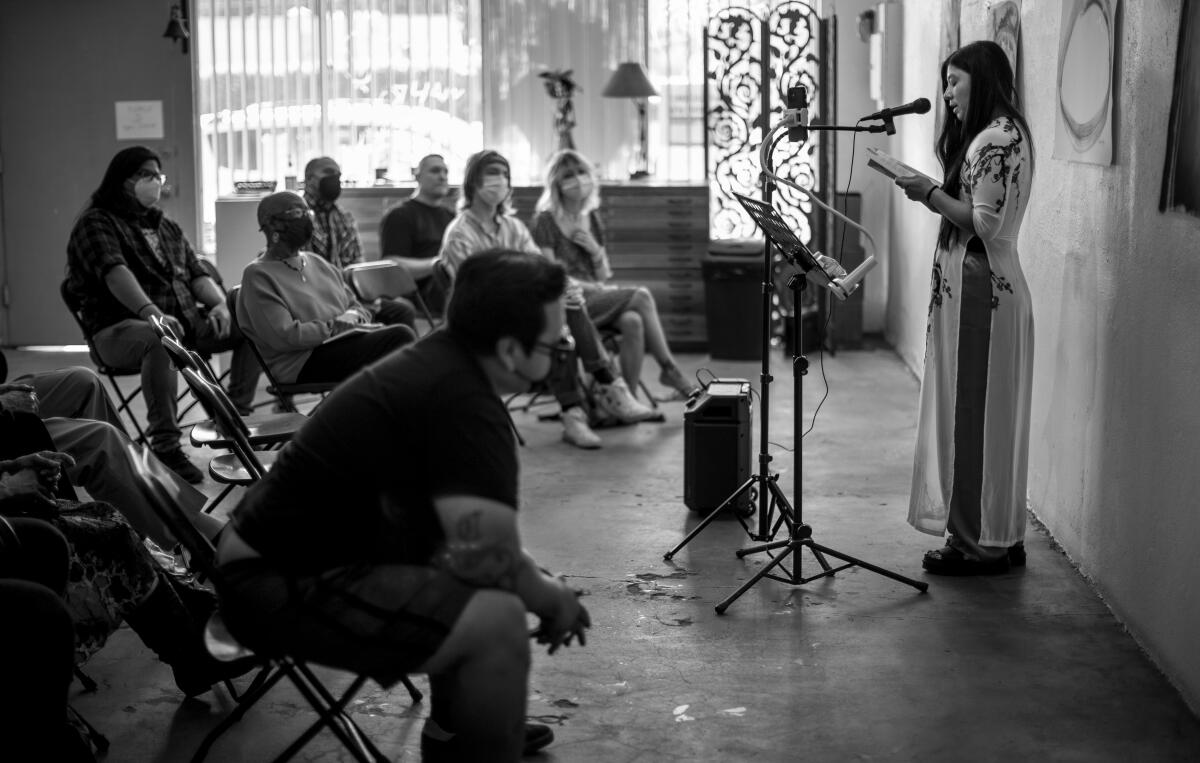
On a recent Sunday, the main gallery was filled to capacity for the launch of Angelina Sáenz’s poetry collection “Edgecliff.” The high windows let in afternoon light, illuminating Roberto Gutierrez’s sumi ink abstracts and everyone in attendance. The week before, Ashley Garcia of @brown.girl.travels organized a free book fair that included mariachis and clothes from the @radicalclothesswap project; more than 400 people had participated.
Avenue 50 is just one of many spaces east of downtown that host literary events, at times mixed with art and performance, including Little Tokyo’s long-running Tuesday Night Project, bookstore Other Books/Otros Libros, Lincoln Heights’ Plaza de la Raza, Cal State Los Angeles’ Center for Contemporary Poetry and Poetics and Ofelia Esparza y familia’s Tonalli Studio.
Highland Park has long been the heart of L.A.’s musical bohemia, home to Chicano punk and Billie Eilish. Now, COVID-19 threatens the scene’s very existence.
These gathering places are just one part of a resilient Eastside scene that cultivates working-class, queer and POC voices in a city whose cultural establishments do not often represent them. In recent years, they have fought hard against the rising costs and displacement that come with gentrification, especially in Highland Park. Avenue 50 has seen its rent double since the last time it was sold; Gallegos had tried to buy the space then, but the Anglo owner had told her it “wasn’t for her.” In persevering, her gallery and others serve as a vital reminder of the communities, movements and creative forces that were here first, no matter what the landlords say.
La Palabra has played a big role in that vitality. The series has featured established writers like Peter J. Harris and Gloria E. Alvarez, but hundreds of emerging writers have also performed. Current curator Sáenz said the series “bring[s] diverse authors to a diverse audience and make[s] it accessible to all.” The venue has also sponsored readings in laundromats and the Metro.
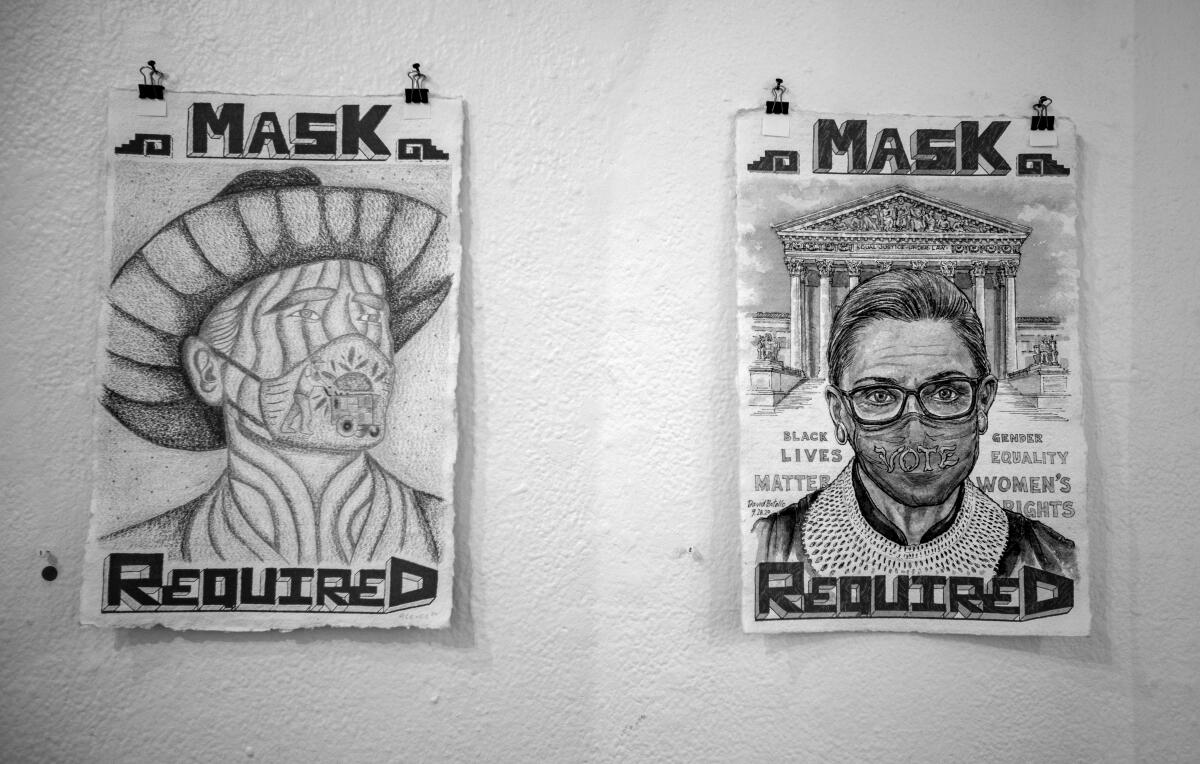
Avenue 50’s mission is even broader than that. Housing a community pantry and, for a time, a vaccination site, it embodies how writers and visual artists can creatively address socioeconomic needs. The gallery bridges creative gaps through Alternative Field, a press that doubles as a multilingual lending library.
“Poets think differently about problems,” said Alternative Field founder Jessica Ceballos y Campbell, a writer, designer and housing rights activist. The library is a space where people can make zines, learn how to publish their work and brainstorm larger creative projects. Alternative Field has published 20 books since 2018, partnering with groups like Glendale Community College and mental health organizations to showcase the work of an entire city, not just those who identify as writers.
What will really help Avenue 50 achieve its goals, Gallegos said, is for readers and collectors to spread the word and buy the work. “We’re [making] the work of Chicano and Latino artists visible. And it’s hard,” she said.
Ceballos described the value of Avenue 50 like this: “This is literature as it is supposed to be: by and for everyone. It’s all of us or none, right?”
Vértiz is a professor and writer from Bell Gardens. Her collection “Palm Frond with Its Throat Cut” won the 2018 PEN America Poetry Prize.
More to Read
Sign up for our Book Club newsletter
Get the latest news, events and more from the Los Angeles Times Book Club, and help us get L.A. reading and talking.
You may occasionally receive promotional content from the Los Angeles Times.
